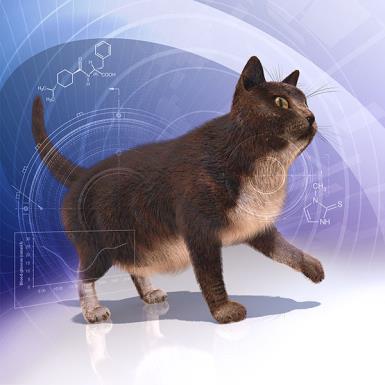The endocrine system encompasses a group of tissues that release hormones into circulation for travel to distant targets. New hormones continue to be discovered. Some act only on a single tissue, whereas others have effects on virtually all cells of the body.
Endocrine System

-
Endocrine System Introduction
-
The Pituitary Gland
-
The Thyroid Gland
-
The Parathyroid Glands and Disorders of Calcium Metabolism
- Overview of the Parathyroid Glands and Disorders of Calcium Metabolism
-
Calcium Physiology and Calcium-regulating Hormones
-
Hypercalcemia in Dogs and Cats
- Hypercalcemia in Horses
-
- Hypocalcemic Disorders of Horses
Endocrine System Sections (A-Z)
Endocrine System Introduction
The endocrine system encompasses a group of tissues that release hormones into circulation for travel to distant targets. An endocrine tissue is typically a ductless gland (eg, pituitary, thyroid) that releases its hormones into capillaries permeating the tissue. These glands are richly supplied with blood. However, nontypical endocrine tissues also contribute important hormones to circulation, eg, secretion of atrial natriuretic peptide from the heart, erythropoietin from the kidney, insulin-like growth factor from the liver, and leptin from fat. New hormones continue to be discovered. Some act only on a single tissue, whereas others have effects on virtually all cells of the body. The effects of hormones on their targets are varied—from enhancement of nutrient uptake to altering cell division and differentiation, among many others.
Neuroendocrine Tissue Tumors
Neuroendocrine cells are characterized by their ability to produce and secrete a neuromodulator, transmitter, or hormone. In addition, these cells contain dense core secretory granules, the storage site for the secreted product(s). Neuroendocrine cells are capable of releasing this product in a regulated manner by classic exocytosis. Neuroendocrine cells differ from classic neurons in that they lack axons and synapses. Certain molecules, particularly those of the granin family (eg, chromogranin) are synthesized and stored in neuroendocrine cells and serve as immunohistologic markers.
The Adrenal Glands
The Pancreas
The endocrine function of the pancreas is performed by small groups of cells, the islets of Langerhans, that are completely surrounded by acinar (exocrine) cells that produce digestive enzymes. The endocrine and exocrine portions of the pancreas are closely related during development, and evidence suggests that islet, acinar, and ductal cells arise from a common multipotential precursor cell.
The Parathyroid Glands and Disorders of Calcium Metabolism
The physiology and disorders of calcium and phosphate metabolism, the function of vitamin D (which acts more like a hormone than a vitamin), and the formation of bone are all tied together in a common system along with two other regulatory hormones—parathyroid hormone (PTH) and calcitonin. Therefore, PTH, calcitonin, and vitamin D are discussed in this chapter together with the associated disorders of calcium homeostasis.
The Pituitary Gland
The Thyroid Gland
All vertebrates have a thyroid gland. In mammals, it is usually bilobed and located just caudal to the larynx, adjacent to the lateral surface of the trachea. The two lobes may be connected by a fibrous isthmus (eg, ruminants, horses), or a connecting isthmus may be indistinct (eg, dogs, cats). The gland is extremely vascular. In birds, it is found within the thoracic cavity; both lobes are located near the syrinx, adjacent to the carotid artery near the origin of the vertebral artery.
Also of Interest
Test your knowledge
In animals, the middle zone of the adrenal cortex, called the zona fasciculata, produces glucocorticoids. Which one of the following effects is LEAST likely to be caused by the release of endogenous glucocorticoids?




